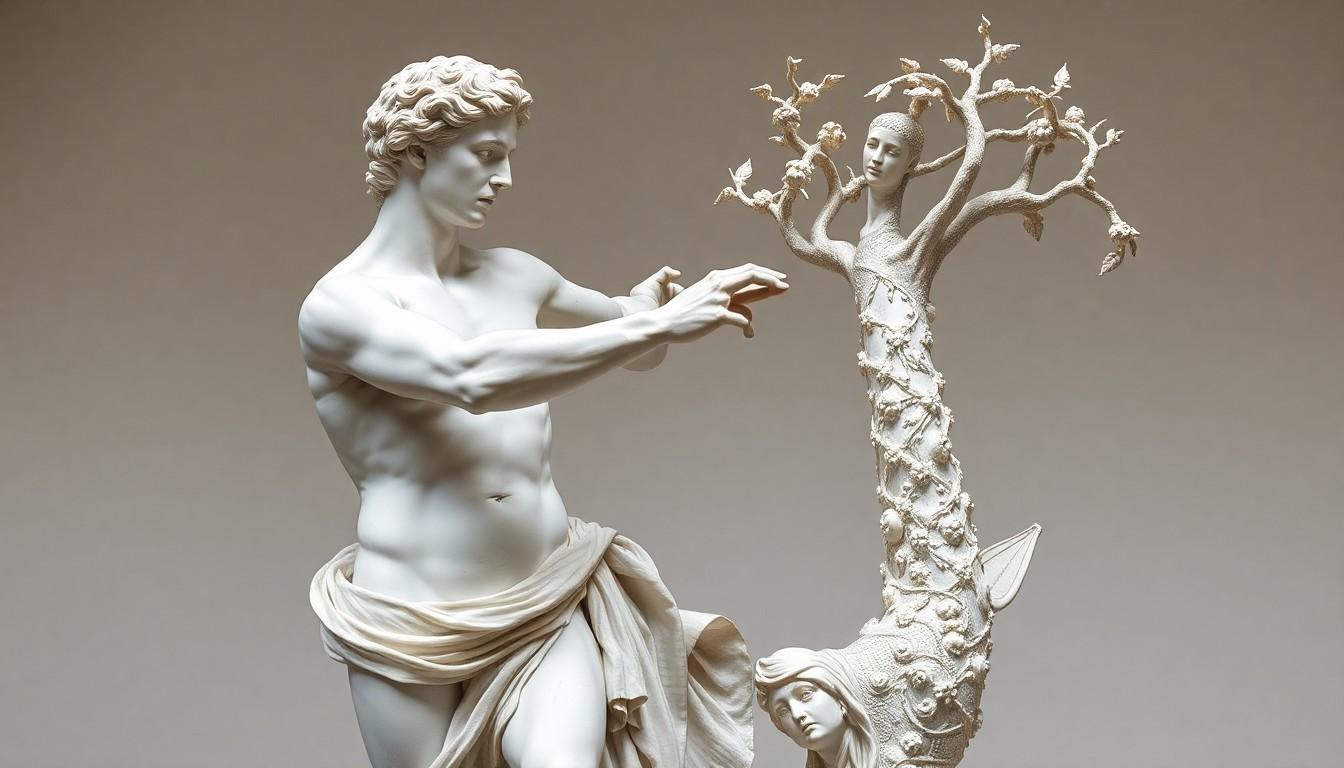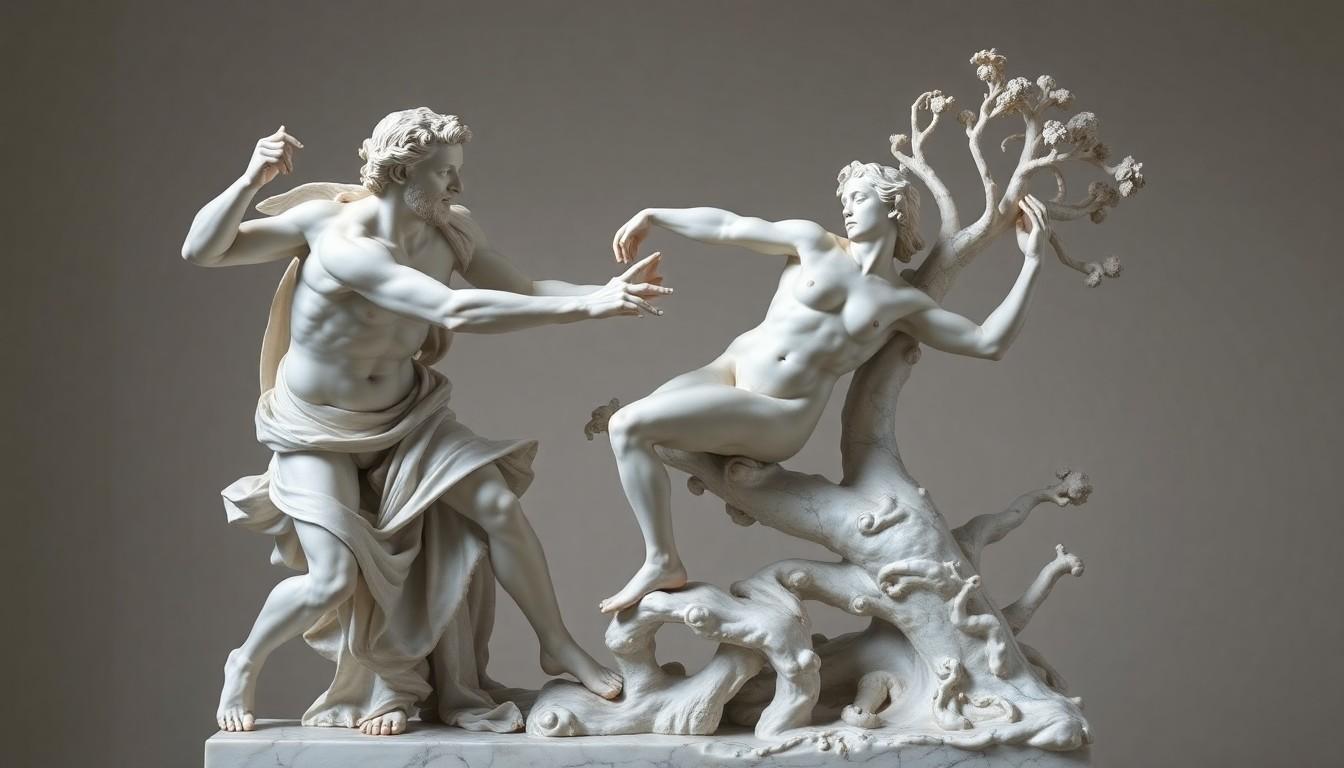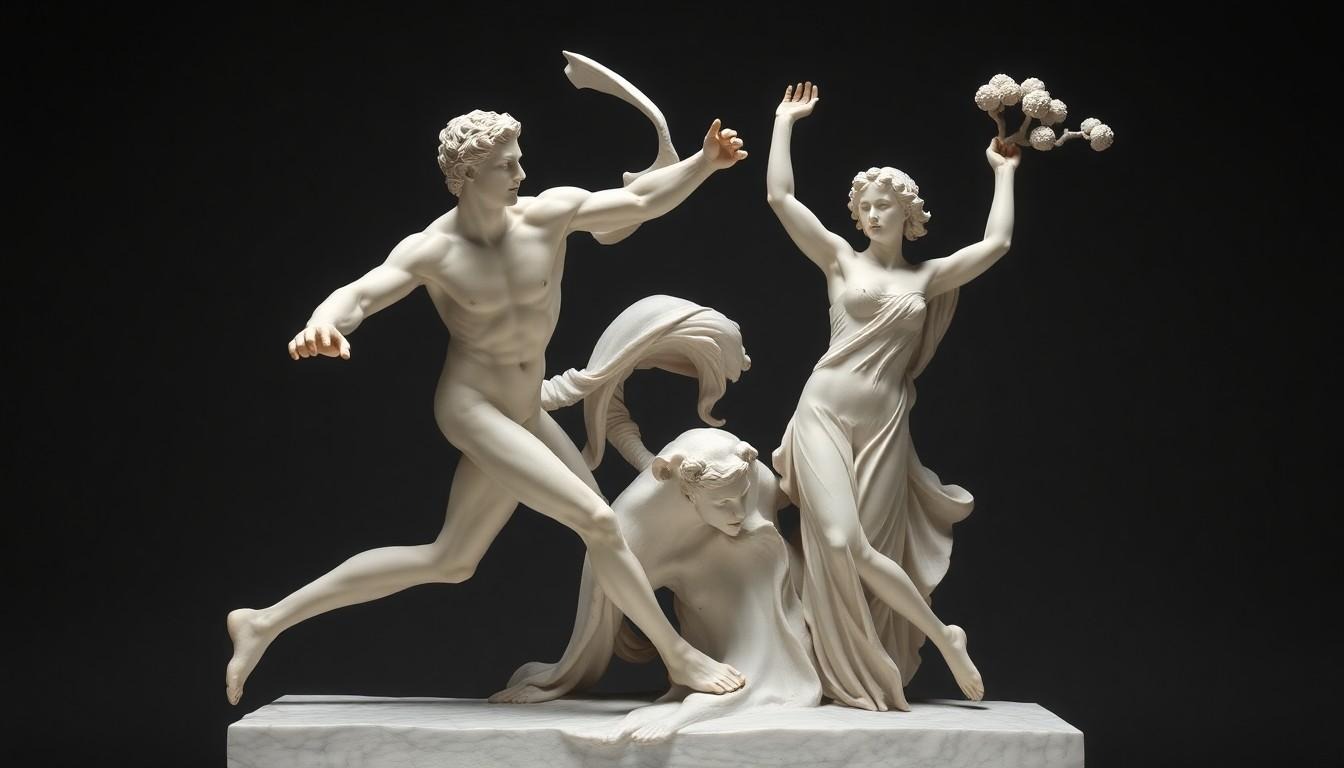In the world of art, few stories are as captivating as the tale of Apollo and Daphne. This ancient myth unfolds a dramatic chase that’s been immortalized in marble, showcasing the eternal struggle between desire and escape. Imagine a love story where one party is so desperate for affection that they’ll chase you down, while the other is literally turning into a tree to avoid the awkwardness. Talk about commitment issues!
The Apollo and Daphne sculpture, masterfully crafted by Gian Lorenzo Bernini, captures this moment in exquisite detail. It’s not just a feast for the eyes; it’s a conversation starter that’ll have you pondering love, transformation, and maybe even your own dating disasters. Dive into the enchanting world of this iconic piece and discover why it continues to resonate with art lovers and casual observers alike.
Apollo and Daphne Sculpture
The Apollo and Daphne sculpture exemplifies Gian Lorenzo Bernini’s exceptional artistry. It stands as a vivid representation of the myth that explores themes of desire and transformation.
Historical Context
Created between 1620 and 1625, this sculpture reflects the Baroque period’s dramatic style. Bernini was a leading figure of this era, with his work often inspired by classical mythology. The myth of Apollo and Daphne stems from Ovid’s Metamorphoses, a narrative that emphasizes the gods’ influence over human emotions and outcomes. Daphne’s transformation into a laurel tree underlines the consequences of desire and rejection. This foundational myth resonated with audiences, making the sculpture not only an artistic achievement but also a cultural commentary during the 17th century.
Artistic Significance
Bernini’s Apollo and Daphne showcases masterful manipulation of marble, capturing dynamic movement. The figures create a lifelike quality that draws viewers into the narrative. Daphne’s outstretched hands and flowing hair contrast sharply with Apollo’s poised stance, highlighting their opposing desires. Bernini’s attention to detail enhances emotions visible on their faces, further immersing viewers in the myth. This sculpture stands out in art history, merging technical skill with emotional depth, making it an enduring symbol of love and escape within the realm of fine art.
Description of the Sculpture
Gian Lorenzo Bernini’s Apollo and Daphne sculpture mesmerizes with its intricate detail and dynamic portrayal of the myth. The piece highlights the emotional intensity of the narrative through its skillful craftsmanship.
Materials Used
Marble serves as the primary material for the sculpture, showcasing Bernini’s exceptional technique. He selected Carrera marble, known for its fine quality, allowing for intricate details to emerge. The smooth texture adds a lifelike quality to the figures, enhancing the visual impact. Bernini’s expertise in carving enhances the contrast between the soft drapery and the sharp features of Apollo and Daphne. The marble not only conveys durability but also symbolizes the purity of their story, with Daphne’s transformation illustrated through the merging of skin and bark.
Size and Scale
Measuring approximately 243 cm in height, the sculpture commands attention within any space. Each figure’s scale remains proportionate, capturing the dramatic tension of the chase. Apollo reaches out to Daphne, who appears to be in mid-transformation, creating a sense of movement. The overall scale accentuates the emotional gravitas of the scene. Its substantial size emphasizes the themes of desire and escape, inviting viewers to connect with the narrative on a personal level.
The Symbolism Behind Apollo and Daphne
This section explores the rich symbolism embedded in Bernini’s sculpture, particularly through its themes of transformation and its connection to Greek mythology.
Themes of Transformation
Transformation plays a crucial role in the narrative of Apollo and Daphne. Daphne’s metamorphosis into a laurel tree signifies escape from unwanted advances. This drastic change illustrates the lengths one might go to preserve autonomy in the face of desire. Each curve of the sculpture communicates this pivotal moment, highlighting the tension between pursuit and sanctuary. The dynamic pose of Apollo, outstretched towards Daphne, contrasts sharply with her gradual transformation, allowing viewers to engage with the complexities of love, fear, and the desire for freedom. Such themes resonate universally, continually captivating audiences across generations.
Connection to Greek Mythology
Greek mythology contextualizes the story of Apollo and Daphne. As a deity associated with poetry and archery, Apollo embodies the quest for beauty and desire. Conversely, Daphne represents nature and independence, often seen as a symbol of purity. Their connection reflects the broader theme of desire clashing with personal choice. Ovid’s Metamorphoses articulates this conflict, showcasing the emotional stakes involved. The pursuit of Apollo leads to Daphne’s plea for help, resulting in her divine transformation. This mythology emphasizes the interplay between desire and self-preservation, a narrative woven into Bernini’s intricate sculpture that transcends time and continues to resonate with viewers.
Notable Artists and Their Interpretations
The themes of desire and transformation in the Apollo and Daphne myth have inspired various artists throughout history. Prominent interpretations include Gian Lorenzo Bernini’s iconic sculpture from the Baroque period.
Gian Lorenzo Bernini’s Version
Gian Lorenzo Bernini’s sculpture, crafted between 1620 and 1625, stands as a defining portrayal of the myth. His ability to manipulate marble creates a sense of movement that captures the intense emotions of Apollo and Daphne. The figures display intricate details, from the flowing drapery to the expressions of longing and fear. Apollo’s outstretched hand towards Daphne highlights the dramatic tension of pursuit, while Daphne’s transformation into the laurel tree vividly symbolizes her escape. This masterful work exemplifies Bernini’s skill in merging emotional depth with technical precision, making it an enduring piece in the art world.
Other Artistic Representations
Numerous artists have explored the Apollo and Daphne theme, each offering unique perspectives. In the 19th century, Antonio Canova’s neoclassical interpretation portrays a more idealized version of the myth. Canova’s work emphasizes elegance and formality, showcasing smooth contours that align with the neoclassical style. In contrast, more contemporary interpretations focus on abstract representations, exploring the emotional complexities of the chase through innovative materials and forms. Each artistic representation reflects the evolution of the myth across time, illustrating how its themes resonate even today.

